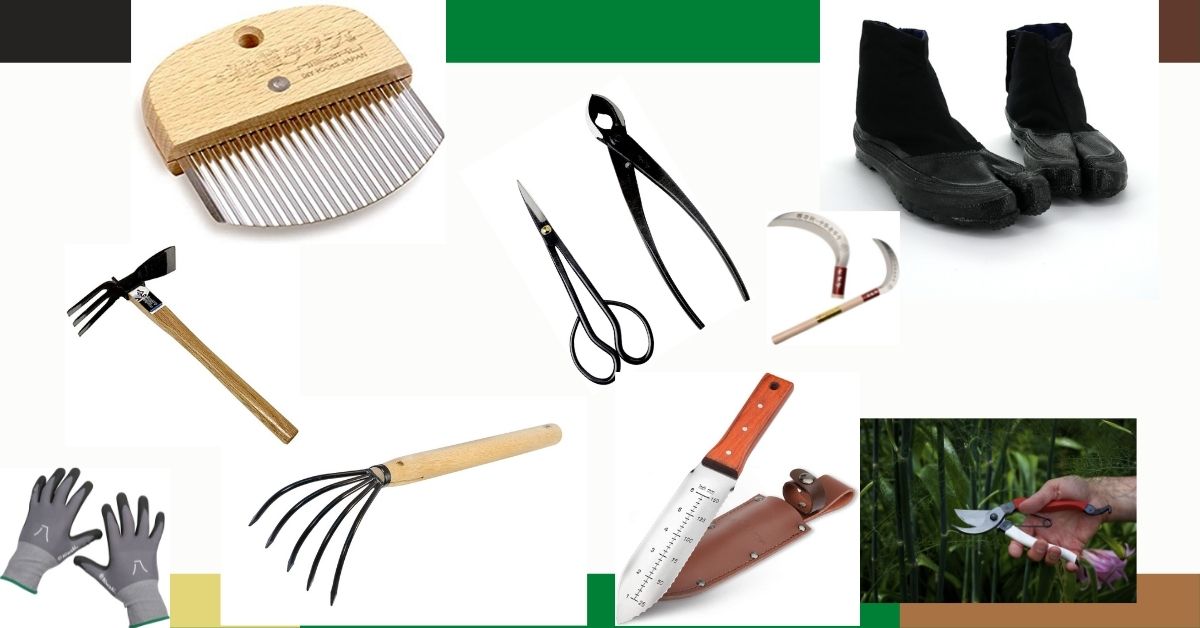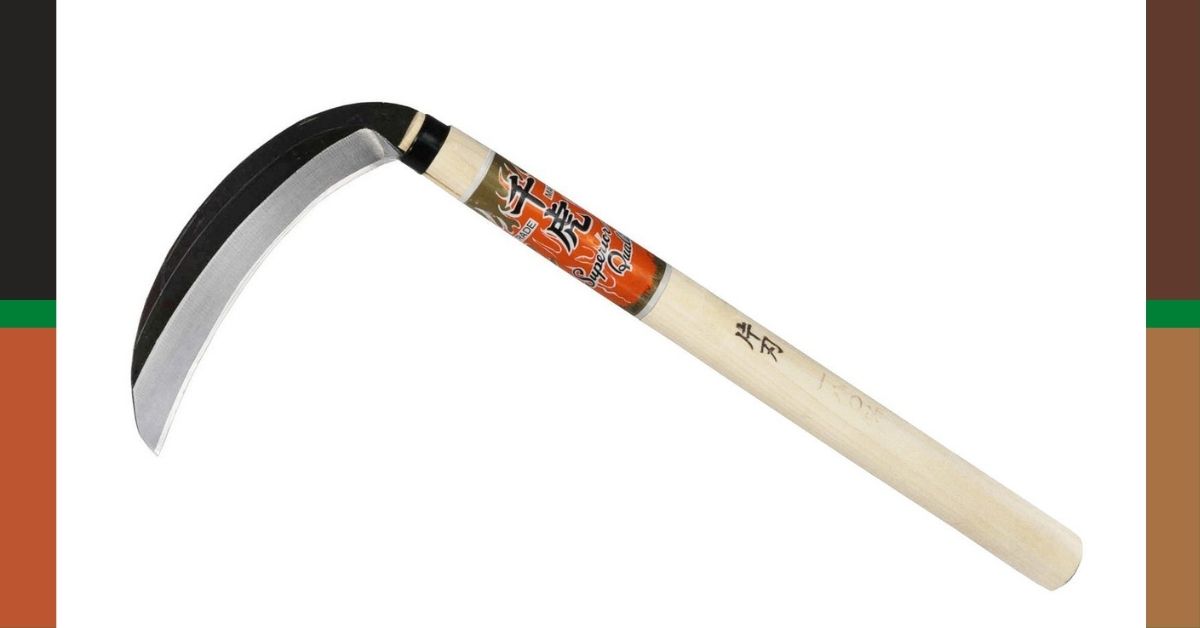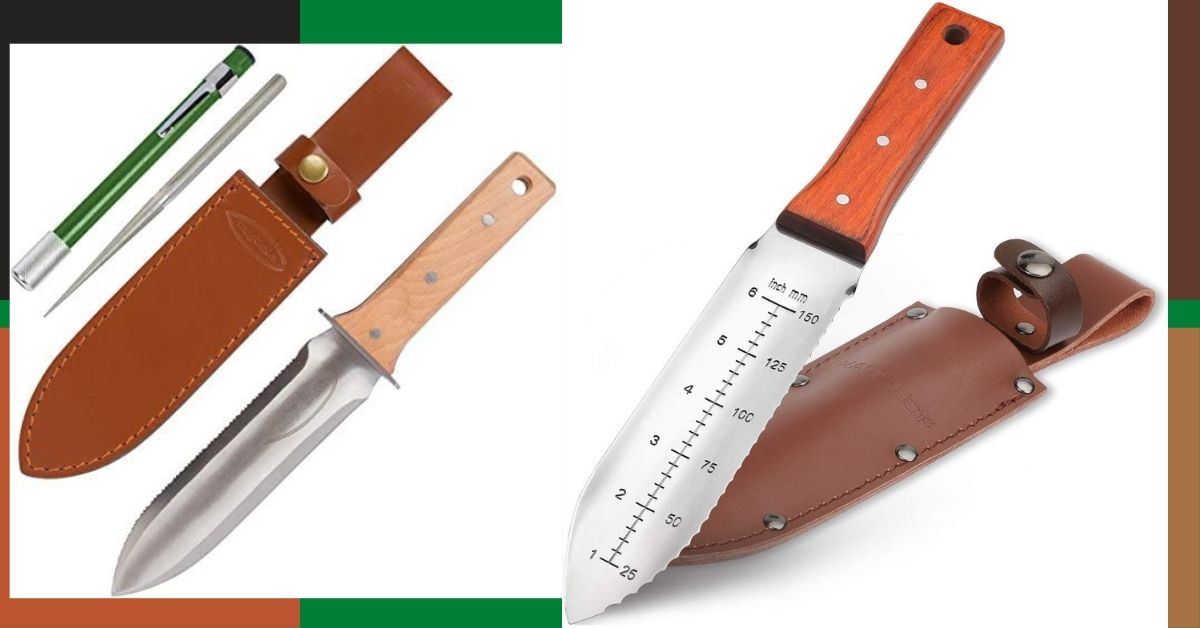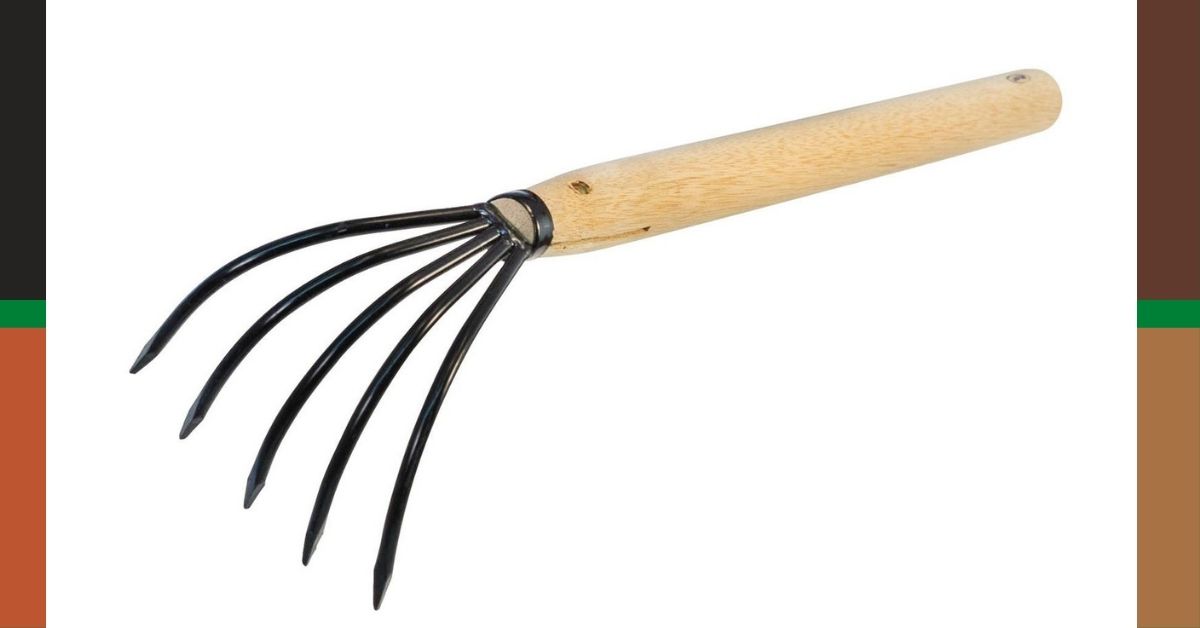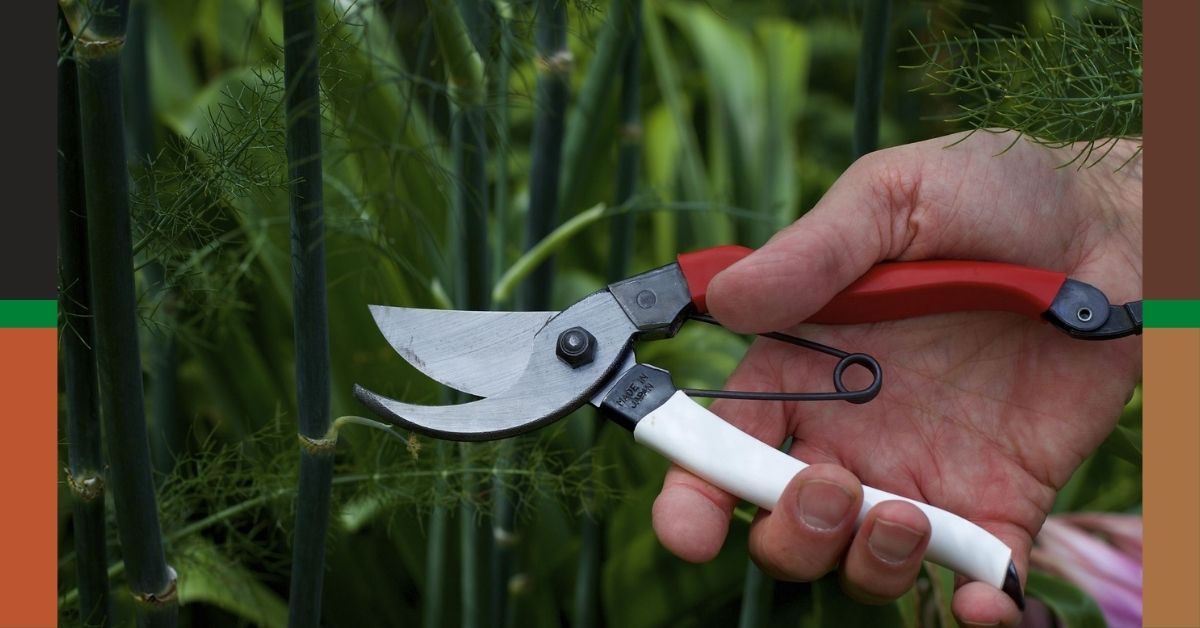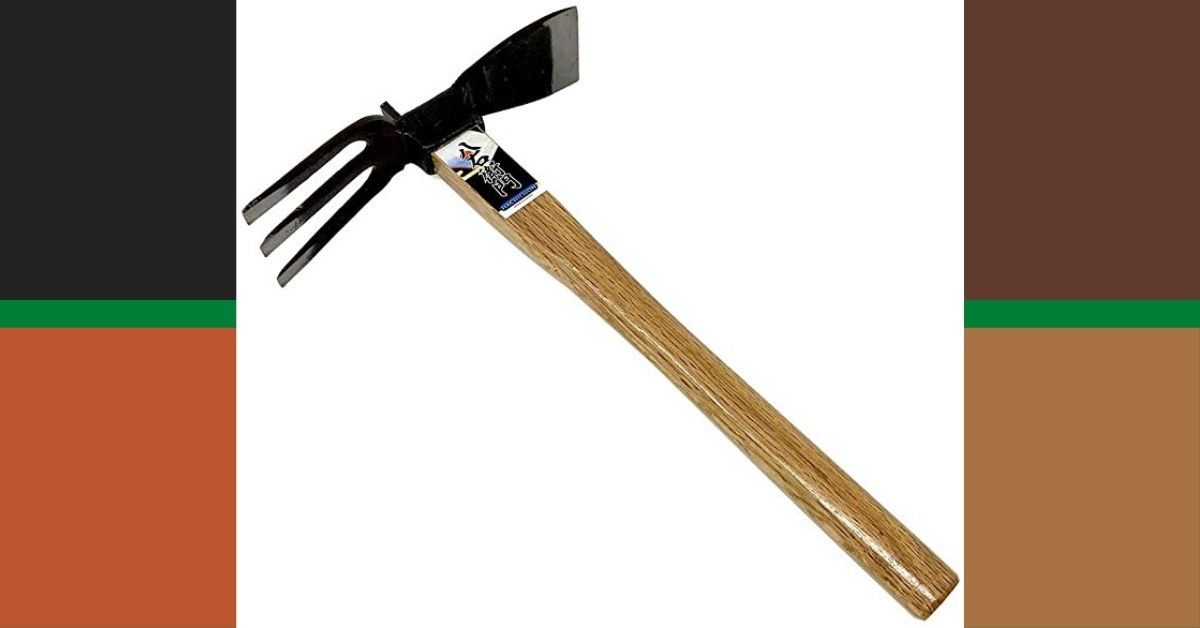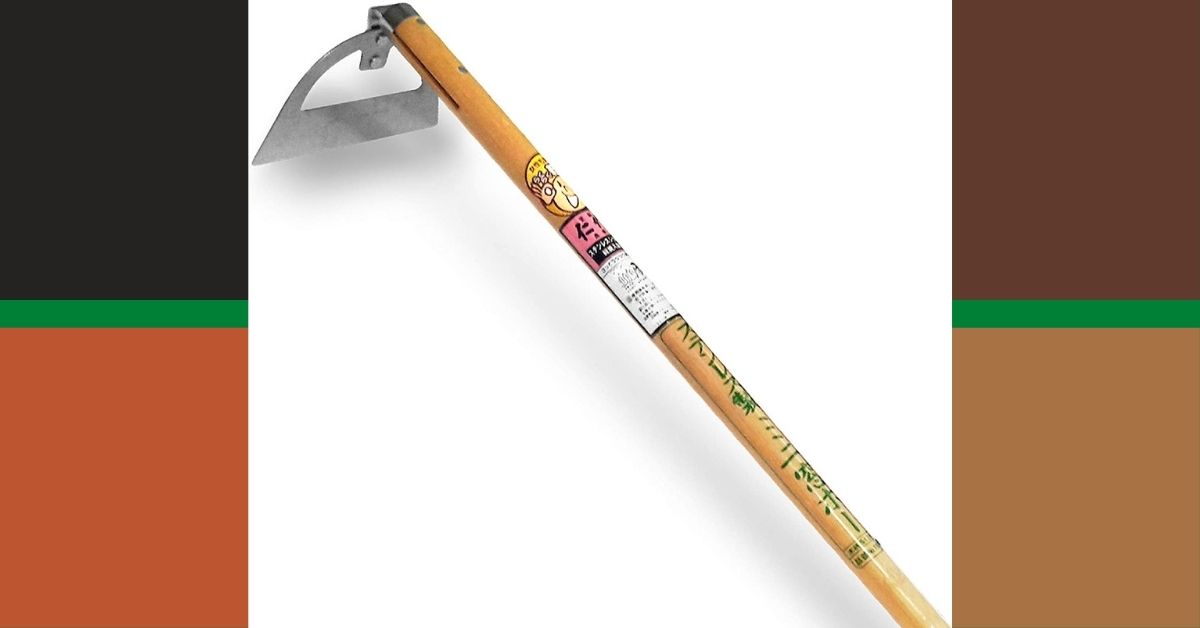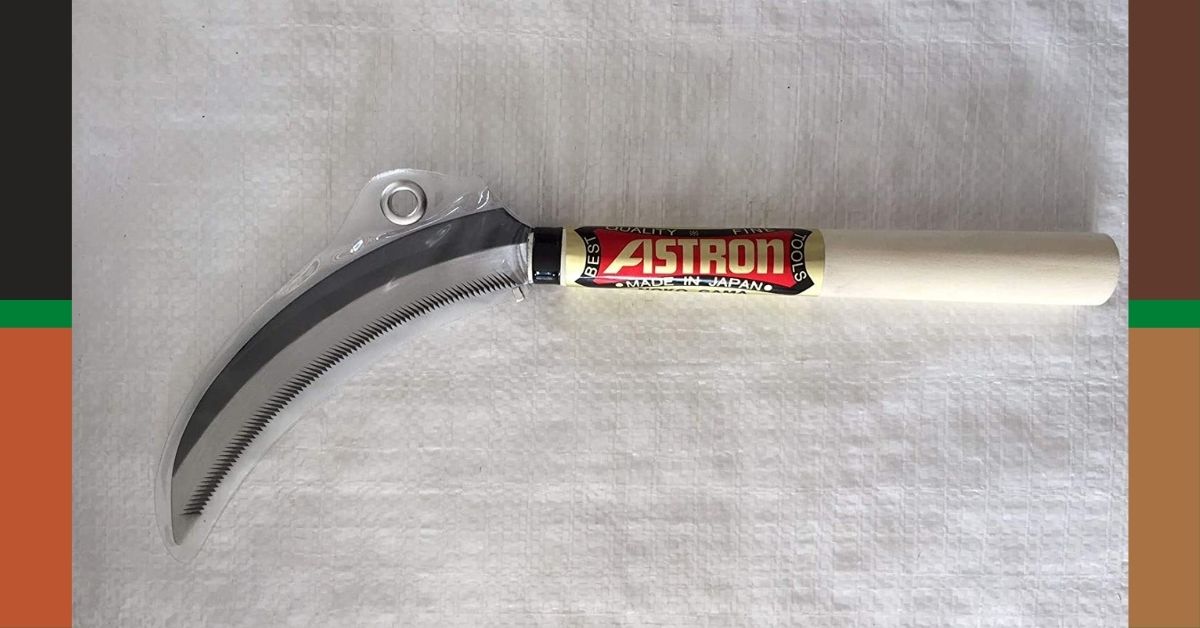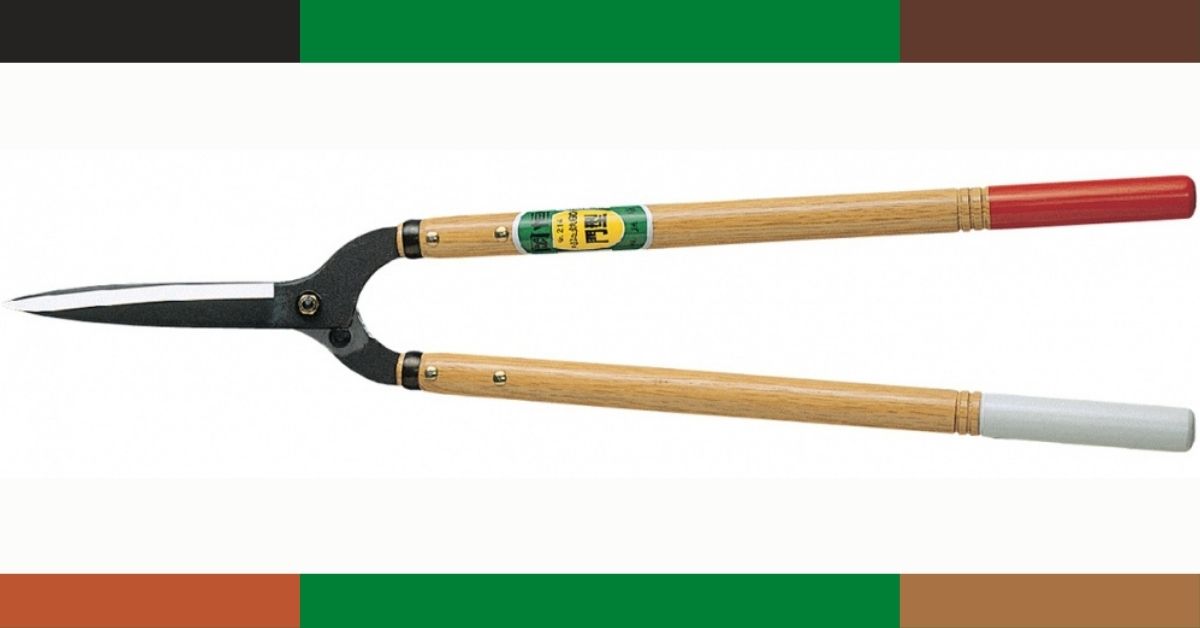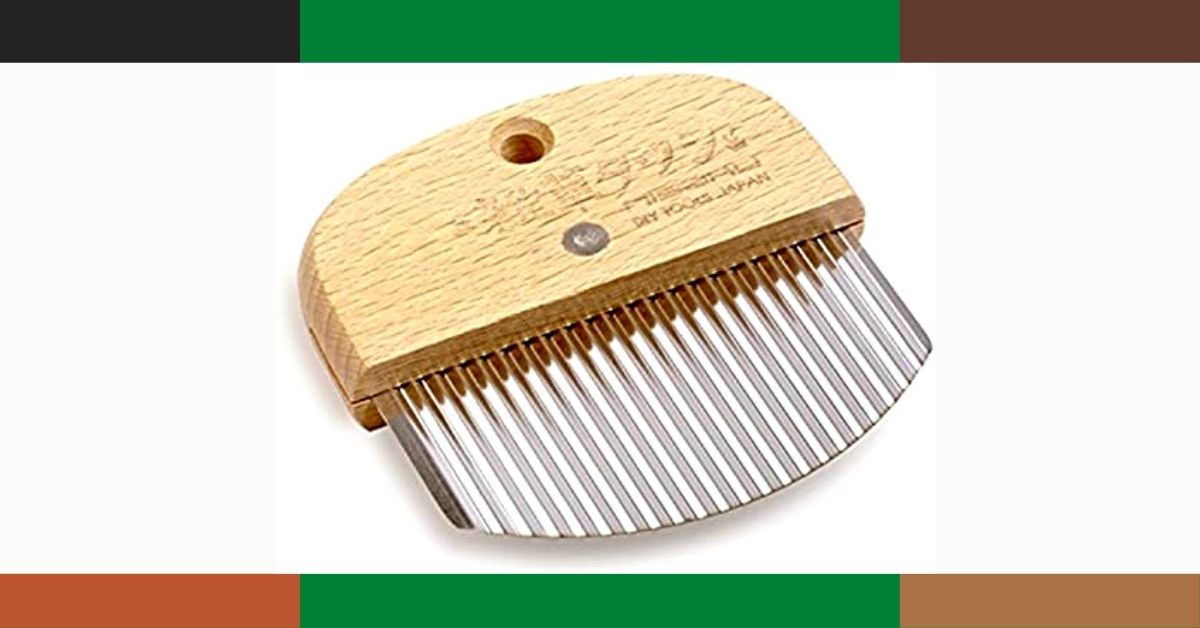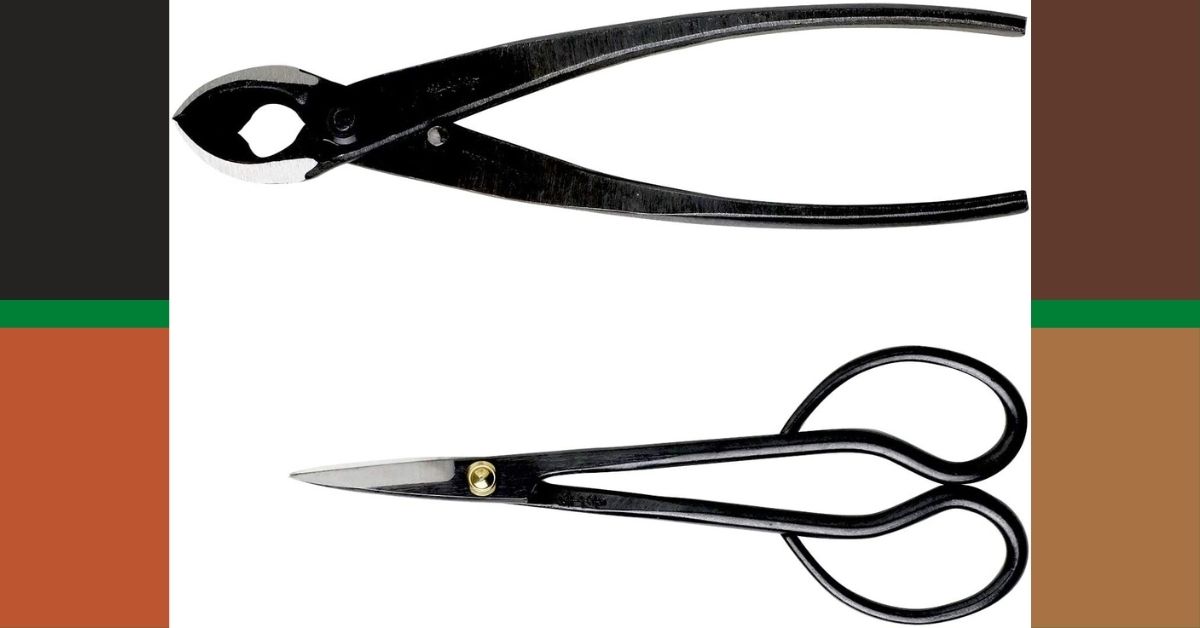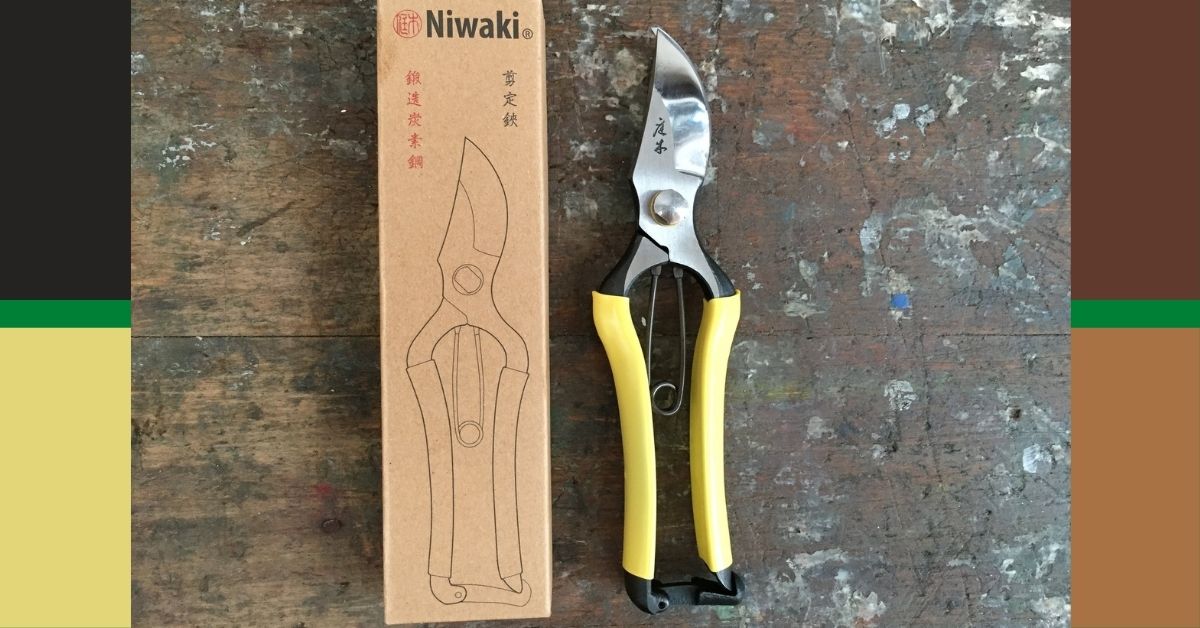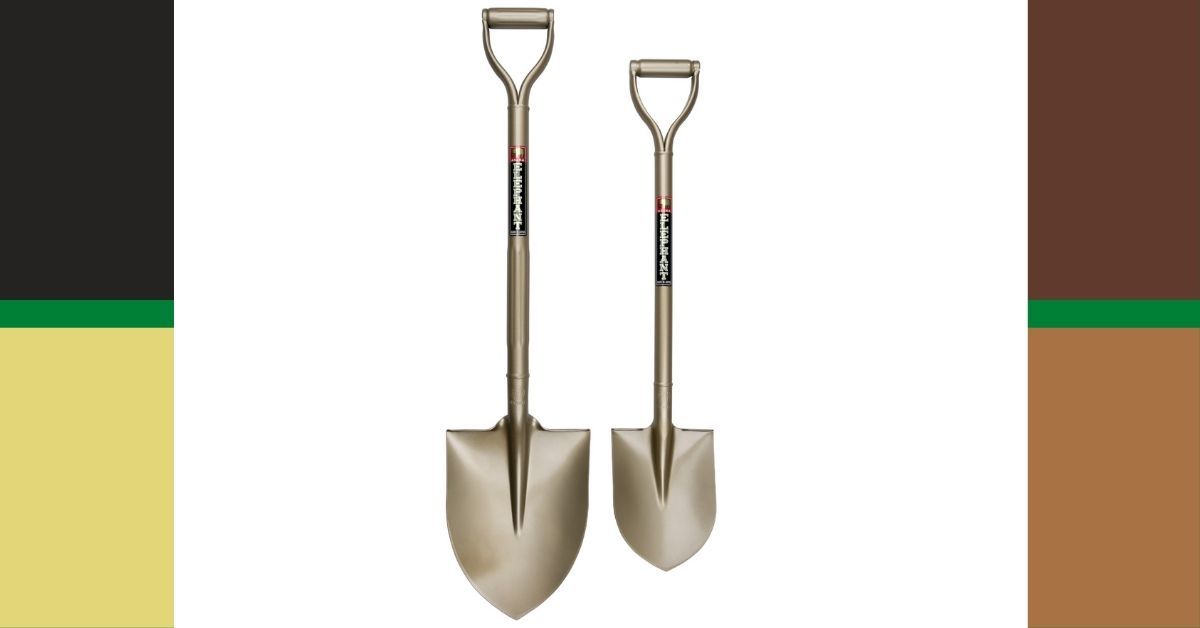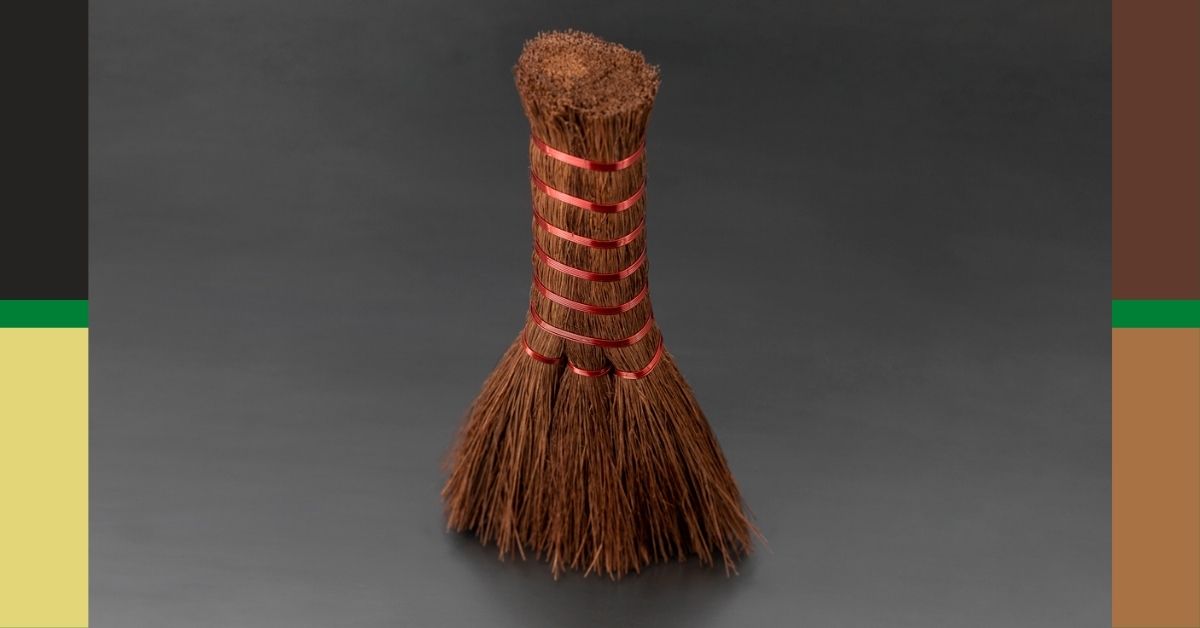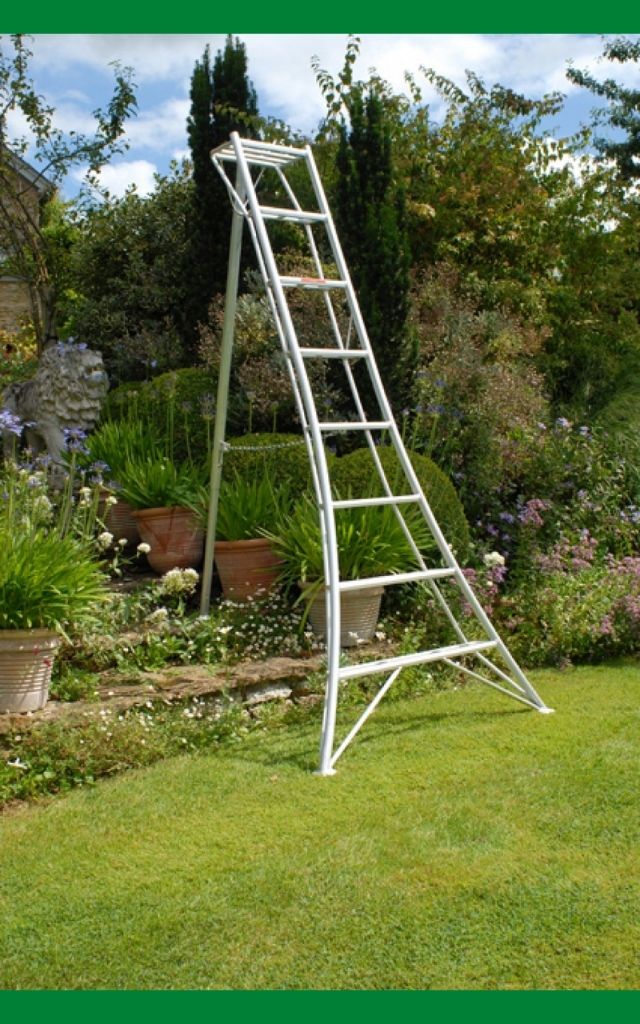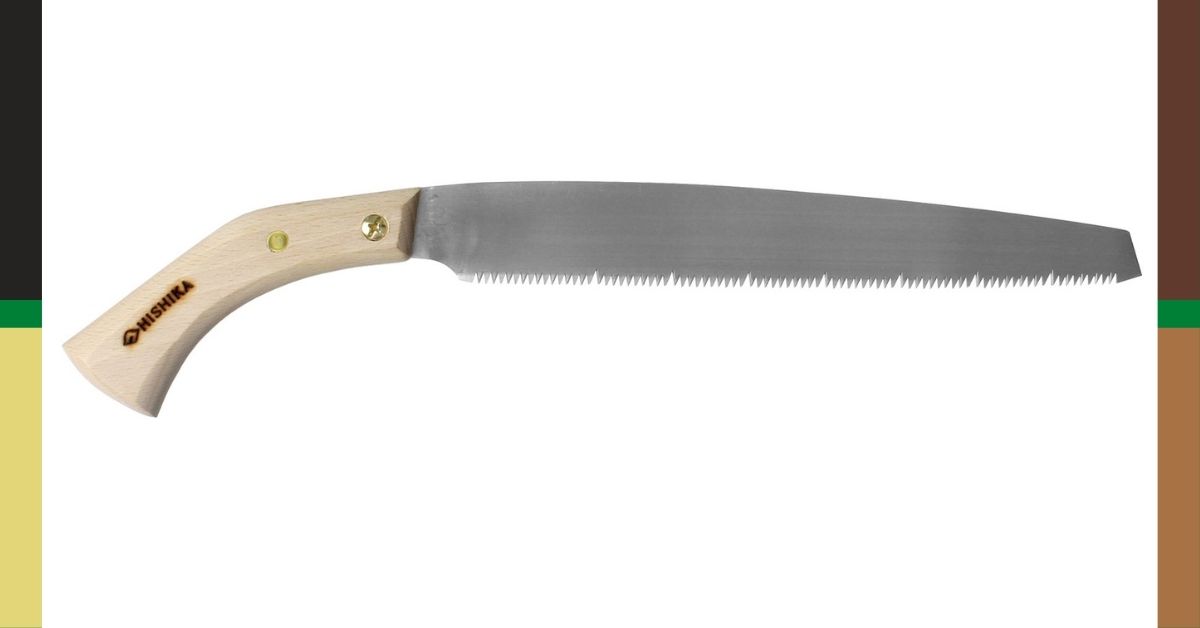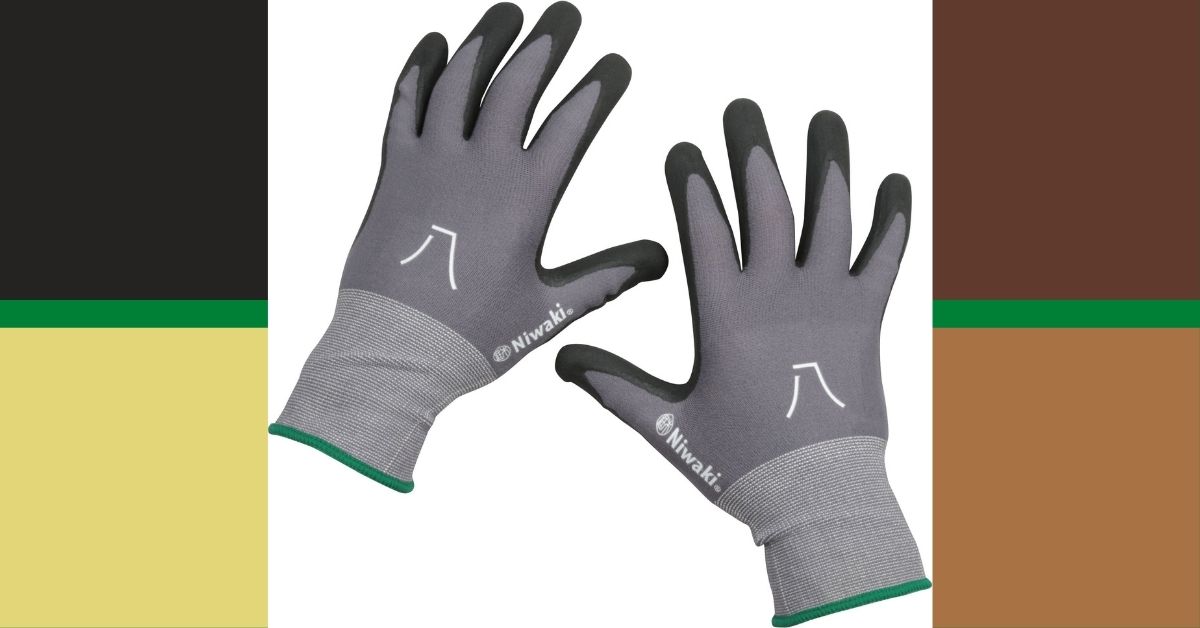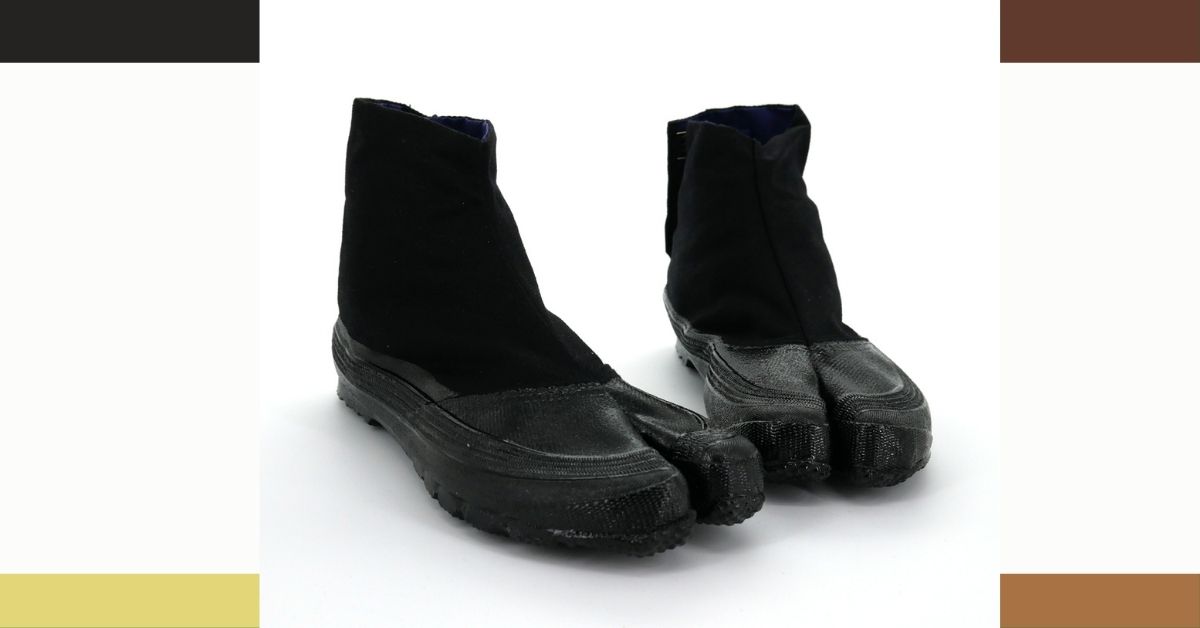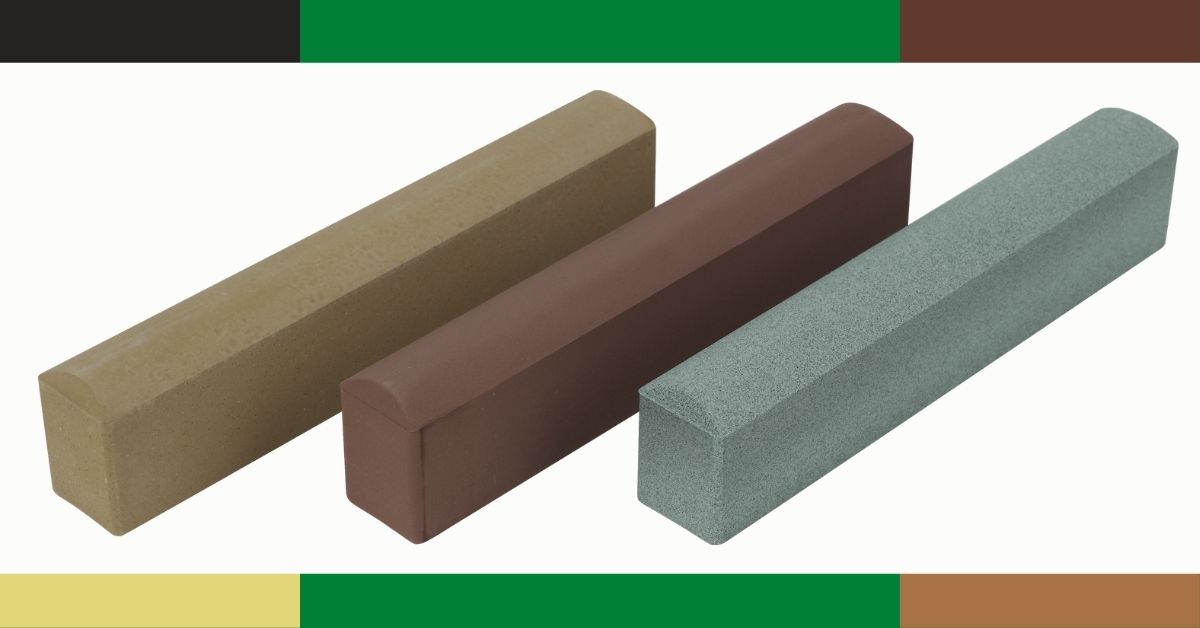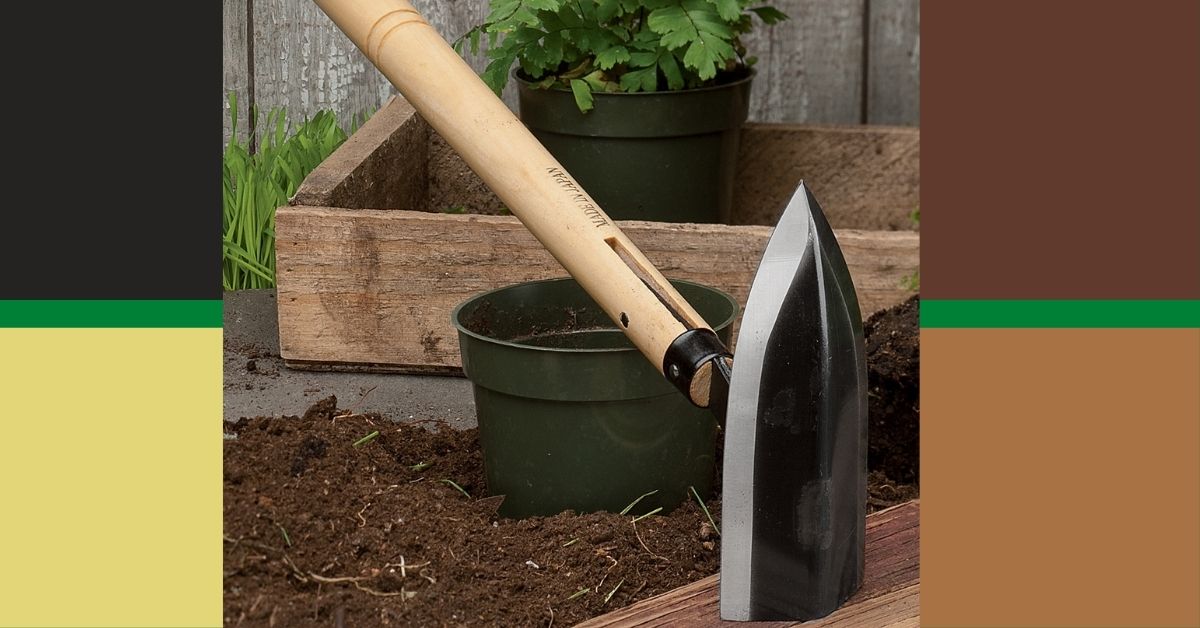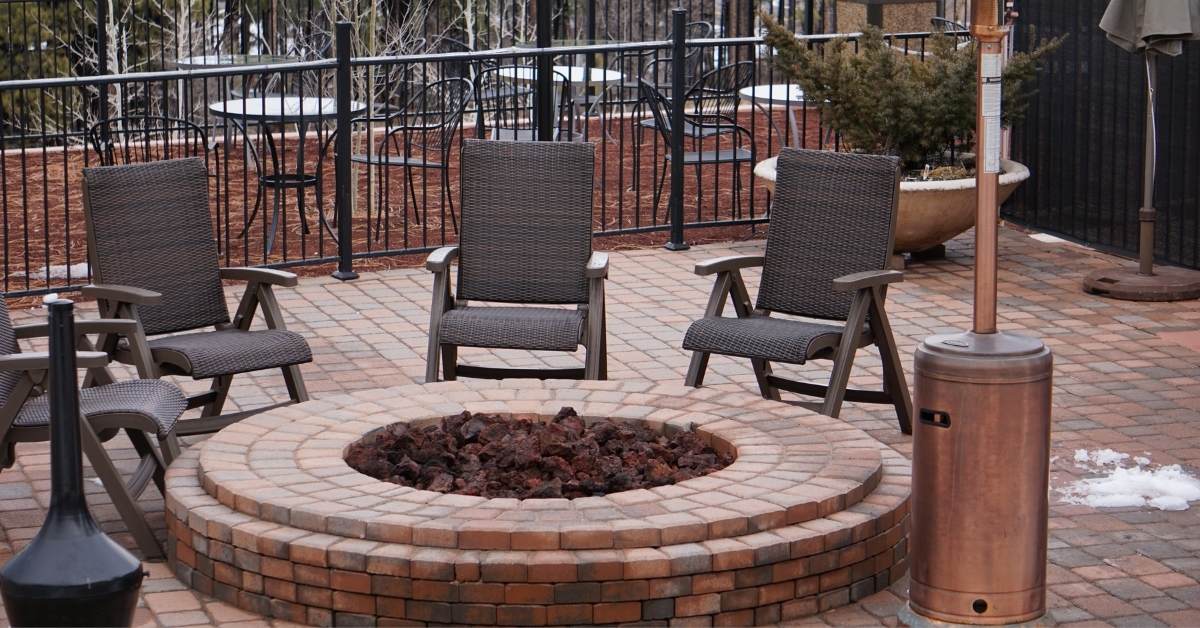This is a list of the most excellent traditional Japanese gardening tools, which are noted for their high performance and adaptability and are well worth your money.
Traditional Japanese garden tools are useful, long-lasting equipment for dedicated gardeners. They are beautifully constructed and painstakingly created with great expertise.
Although less costly Japanese garden equipment is available, investing a bit more in high-quality tools pays off handsomely. Continue reading to discover more about how to choose and use Japanese garden equipment.
Below, we go through how to use a variety of Japanese hand tools, including what you might need them for, what to look for when buying your own, and some goods to think about when you’re ready to buy.
Whether you’re looking to prune, weed with ease, or start planting, there’s a Japanese garden tool for you.
Why do so many people like high-quality Japanese gardening tools?
Because Japanese garden tools are usually more ergonomic and lightweight than traditional garden tools, and they are manufactured of higher-quality steel. They are more efficient and precise, do not degrade as rapidly owing to wear and tear, and just appear to be more fun to use.
Many are purpose-built for a particular task, allowing you to select the best tool for the job. Most of the labor you’d perform in a home garden would be covered by a collection of equipment like the ones detailed here.
A closer look into the past:
Katana (Japanese swords) were extensively employed in close-combat warfare during the age of samurai warriors. Professional sword smiths handcrafted these swords. To strengthen a sword’s strength and longevity, many layers of carbon steel were pounded and heated.
With a few exceptions, the Meiji government issued an order in 1876 prohibiting the manufacture of katana. This made things tough for samurai and the smiths who made their swords. Many smiths choose to make tools for carpentry, domestic duties, and gardening in order to keep their art alive and well.
The sharpness of cutting edges and the longevity of these devices demonstrate the tradition of sword making.
Traditional Japanese forging techniques are difficult to master and need a high level of skill and perseverance. In today’s market, tool quality might vary dramatically.
Hori Hori knives, spades, triangular hoes, Nisaku sickle hoes, and Nejiri Gama hoes are among the Japanese implements available. Claw rakes and crevice-and-sidewalk weeders are also popular among gardeners, as are chisels, mallets, hatchets, trowels, and pruners.
Small armies of specialist tools are also made for bonsai and ikebana lovers in Japan. Two Japanese gardening equipment that serious gardeners should acquire are listed below.
Japanese gardening equipment provides a lot of advantages…
Japanese gardening tools are valued belongings for every gardener since they are widely recognized for their quality and craftsmanship. The general specifications of those tools are;
- They look cool,
- strong; constructed of more rigid steel that keeps its edge sharper for longer,
- outstanding performers,
- long-lasting, efficient, and resistant to wear and tear,
- designed for accuracy, enabling you to choose the best tool for your needs,
- a centuries-old technique for maintaining immaculately maintained Japanese gardens.
They need less sharpening…
Furthermore, there is something unique about having and utilizing a garden tool from another country; it makes you feel like you are a part of another culture. It may even pique your interest in knowing more about Japanese history.
In any case, Japanese gardening equipment is well worth the money. They also make wonderful presents for gardeners!
1. Japanese clearing sickle
This tool, also known as a weeding sickle, has a razor-sharp blade with high tensile strength for increased cutting force. The KEYI Steel Grass Sickle‘s (not the image) 13.8-inch wooden handle provides maximum leverage and power to users.
From a safety standpoint, this Japanese clearing sickle is an excellent choice for gardeners due to its ergonomic, anti-slip design.
The tool is high-quality and hand-forged, making it incredibly easy to use.
What can you use a Japanese weeding sickle for?
- cutting back fodder,
- cutting grass and weeds,
- trimming vines,
- cutting away branches,
- edging lawns,
- trimming undergrowth,
- harvesting or reaping grain crops.
2. Hori-Hori Garden Knife with Diamond Sharpening Rod
In Japanese, the word “hori” (ホリ) means “to dig.”
Gardeners commonly refer to the Hori Hori knife as a “dirt knife,” “weeding knife,” or “mountain vegetable knife,” which shows its primary use.
This modified version of a 16th-century Japanese gardening tool is a professional Japanese gardening tool. The blade is 7 inches long and manufactured of 420 stainless steel. Different dimensions are indicated on the blade to assist you in planting bulbs and seedlings at the correct depth.
With a full tang handle, it’s meant to be particularly sturdy. For increased strength, three rivets are used to attach the tool. Even the knife’s sheath is of exceptional quality, with extra thick leather for optimal protection.
The knife’s edges are sharp enough to cut sod, roots, and twigs (one side of the blade is serrated), while the point is semi-sharp.
Hori Hori is a favorite gardening tool of mine. I am convinced that this item is all you need to maintain a container garden.
What is the purpose of a Hori Hori knife?
Consider Hori Hori to be a tool that combines the functions of a knife and a trowel or shovel.
It may be used for a variety of purposes, including:
- – Digging and weeding,
- – loosening the soil around plants,
- – trimming vines and branches,
- – planting bulbs,
- – cutting through the dirt and roots,
- – determining depth for planting bulbs,
- – sod cutting,
- – clearing compacted soil for driving vegetable stakes,
- – transplanting,
- – splitting perennials,
- – removing plants,
- – sod cutting,
- – loosening the compacted soil for driving vegetable stakes.
3. Japanese Ninja Claw Rake
A five-prong rake is the greatest Japanese garden equipment for breaking up difficult soil around plants.
To perform the job, it’s built of rugged, strong Japanese steel with an ever-durable wood handle. Asano Japanese Ninja Claw Rake & Cultivator has a balanced and well-adjusted sensation thanks to the wood handle.
It is an instant favorite for gardeners of all levels of experience due to all of the excellent features.
What is the purpose of a Japanese claw rake?
This versatile tool can help you with a variety of gardening jobs, including:
- aerating the soil,
- weeding around plants,
- digging up boulders,
- ripping up the grassroots,
- sweeping mulch around newly planted trees,
- incorporating compost into the soil.
4. Okatsune bypass 103 pruner
With each usage, these high-quality, stylish Japanese bypass pruners give a clean, accurate cut.
The No. 1 choice for expert gardeners in Japan, and a BBC Gardeners’ World Magazine Best Buy winner, are these deceptively simple, sturdy secateurs. They’re well-made, sharp, and durable, and they’re simple to use and last a long time.
Pros: It’s reassuringly sturdy, well-balanced, and comfortable to hold.
Cutting is simple because of the blade’s razor-sharp edge that lasts a long time.
Cons: The chunky safety catch is at the base and requires two hands to engage (but with experience, the side of your knee may be used!).
The dismantle and maintenance bolt is rather strong.
Their razor-sharp blades are fashioned from Japanese Izumo Yasuki steel, the same material used to make ancient Katana swords (used by Samurai fighters).
When needed, the pruners may be disassembled for sharpening. For additional security, the handle has a specific locking mechanism at the end.
Use Japanese pruners for
- general-purpose cutting,
- close and clean cuts on branches,
- removing dead branches,
- pruning overgrown shrubs and trees,
- deadheading flowers,
- snipping herbs from the yard,
- chopping off thicker branches,
- snipping away dead twigs.
What are Okatsune 103 secateurs like to use?
Simple secateurs with few components or gimmicks rely on the blade’s strength and sharpness to cut easily and effortlessly. Cutting consistency is ideal for all pruning chores, especially heavy-duty applications.
The safety catch requires two hands to open and shut; otherwise, it may be opened and closed by brushing against your leg. When the secateurs are in use, they may be folded out of the way.
Thanks to the red and white handles, they’re difficult to miss, which let them stand out amid the clippings — red during the day, white in the evenings!
Are the Okatsune 103 secateurs a decent buy?
Our top-scoring pair and at the upper end of the pricing spectrum, although not as pricey as some of the others we examined.
Who may benefit the most from Okatsune 103 secateurs?
Gardeners of all levels, amateur and professional, will benefit from these tools available in three sizes to fit medium, large, and small hands.
Product Specifications
Product
| Brand | Okatsune |
| Name | Okatsune 103 Bypass Secateurs |
| Model | 103 Bypass Secateurs |
| Price | $35.70 |
| Secateur type | Bypass |
Features
| Hand orientation | Right-handed |
| Handle | Plastic-coated |
| Maximum cut diameter | 25mm |
| Blade material | Hardened steel |
| Safety catch | Yes |
| Weight | 202 gr |
| Warranty | 2 YEAR |
5. Japanese garden hoe and cultivator hand tiller by HACHIEMON
This hand tiller will become a favorite in your garden, and you’ll use it for just about anything.
The HACHIEMON Japanese hand hoe/tiller is well-balanced, efficient, and easy to use. It exemplifies superb Japanese workmanship.
The tool is entirely hand-forged, with a razor-sharp edge that is built to last. It has a 15.3-inch wood handle that is robust, powerful, and allows for a decent swing.
The tines (claws) on the cultivator end are carved from a single flat piece of steel, making them stiff and resistant to bending.
This multipurpose tool is a must-have for any garden tool collection!
This versatile tool can help you with a variety of gardening jobs, including:
- Breaking up compacted soil with the blade,
- pulling runner roots from beneath the ground with the cultivator’s tines (claws),
- chopping out deep-rooted weeds in the lawn,
- digging trenches for underground sprinkler systems,
- cultivating soil,
- aerating and loosening up the soil,
- piling soil around the plant’s base,
- mixing soil with compost or fertilizers,
- making furrows for trench composting.
6. Nisaku’s Japanese handheld draw hoe
This high-quality hand hoe is crafted from Tomita Japanese stainless steel. Because the tool’s shank is forged in one piece to the blade rather than being welded together as most manufacturers do, it’s exceptionally sturdy and bends resistant.
The blade is 4.5 inches broad, making it ideal for hoeing between rows, and it’s made of rust-resistant stainless steel for easy upkeep. The ergonomic handle is constructed of polished wood and has a hook on the end to hang it in the garage or shed.
For this, use a Japanese draw hoe.
– hoeing between rows – hilling potatoes – weeding – clearing dirt off of old crops and plant residues – collecting rooted vegetables like beets, carrots, and potatoes – piling soil around the plant’s base – excavating soil for planting flower bulbs, onion sets, and potatoes
7. Nessagro Astron’s Japanese sod cutter and remover
This Japanese garden implement resembles a little pruning saw in form.
Its large, serrated 4.5-inch blade slices through thick mats of grass and plastic netting on the back of purchased sod-like butter.
You will not be disappointed by the handle. It’s totally textured, so it won’t slip out of your hands, even if they’re wet.
This tool is a must-have if you need to install or remove grass.
Why to use a Japanese sod cutter?
- removing old sod-cutting through high grass,
- cutting through sod mats plastic netting,
- scrubbing a thin layer of dirt from beneath the grass.
8. Okatsune Japanese precision hedge shears
The Okatsune Precision Hedge Shears are pretty easy to use and love working with. Even though they are more expensive, they might be the best investment you make, especially if you have a lot of hedging plants to care for or want to sculpt your boxwood or conifer hedge.
These shears are razor-sharp and almost as simple to operate as high-end electric shears.
Use Japanese hedge shears;
- to trim your hedges,
- concurrently chop a large number of branches,
- cut woody materials up to 12 inches thick,
- prune off dead branches,
- shape bushes into certain forms.
9. Nisaku’s Japanese crevice and sidewalk weeder
What an excellent tool for getting rid of weeds growing between cracks in your driveway or walks or between bricks, stone tiles, and concrete pavers on your patio! Simply drag the tool along the crevice to remove the visible section of the weed. Maintains the cleanliness of your house!
The top of the Japanese crevice weeder is composed of corrugated stainless steel and has a wooden grip. This tool is reasonably lightweight, very easy to use, and inexpensive, making it an ideal stocking stuffer for any homeowner.
This crevice weeder may be used for a variety of tasks such as;
- removing apparent weeds from cracks and crevices in your sidewalk,
- driveways,
- a patio built of pavers,
- or brick edging.
10. Japanese Bonsai garden tool kit by Hanafubuki Wazakura
This three-piece bonsai beginning tool package includes bonsai Satsuki scissors, a broom, and tweezers with a rake for a newbie bonsai lover.
With the aid of black carbon steel scissors, you may make precise cuts on your Bonsai trees without hurting the branches or impeding their growth.
The stainless steel tweezers will assist you in weeding with precision while minimizing plant disturbance.
Cleaning up after working on your plants using a Bonsai broom (the sole component in this set produced in China) is a breeze.
Clean, neat, and tidy Bonsai = serenity. I think I am getting a new hobby!
Take care of your bonsai trees with this bonsai garden tool kit.
11. Review on Niwaki Gr Pro Secateurs
These are simple, Japanese-style secateurs with hand-forged blades and bright yellow handles.
These secateurs are a BBC Gardeners’ Word Magazine Best Buy winner, feeling solid and robust with outstanding cutting performance. They come with a two-year guarantee and have a straightforward design with easy-to-spot yellow handles.
Advantages:
- It’s comfortable and well-balanced.
- Cleanly and thoroughly cut
- Strong and durable
Cons:
- You’ll have to get used to the safety catch.
- Blades can not be replaced.
- Expensive
What are the pros and cons of using Niwaki GR Pro Secateurs?
In the popular Japanese style, these basic secateurs feature hand-forged carbon steel blades and a large safety clasp at the base. This can take some getting used to, but it’s actually relatively simple to operate by simply flicking it against your thigh.
They’re comfortable and well-balanced in hand, and they neatly and effectively cut all stems. Their bright handles are easy to recognize and are solid and durable. There are left-handed and lightweight (190g) variants available, as well as two sizes to fit medium and large hands. A new spring is supplied, and a two-year guarantee is offered.
Is the Niwaki GR Pro Secateurs a smart investment?
We adore these secateurs’ simplicity, quality, and outstanding performance, which come with just a two-year guarantee. They’re made to last, and we think they’re a fantastic deal.
Who can benefit the most from the Niwaki GR Pro Secateurs?
With a size and weight to suit everyone, it’s ideal for all gardening chores and every gardener.
Product Specifications
Product
| Brand | Niwaki |
| Name | Niwaki Gr Pro Secateurs |
| Model | Gr Pro |
| Price | $75 |
| Secateur type | Bypass |
| Secateur handle type | Suitable for left or right-handed use |
Features
| Hand orientation | Right-handed |
| Handle | Plastic-coated |
| Maximum cut diameter | 15mm |
| Carbon steel | |
| Blade removable | No |
| Safety catch | Yes |
| Weight | 239 gr |
| Warranty | 2 YEAR |
12. Review of the Niwaki Golden Spade
A sturdy, hardworking metal spade that is surprisingly light.
This sturdy metal spade’s light, balanced feel is popular with testers, who appreciate its ability to slice through tough ground fast and efficiently. It’s made to last, and a two-year warranty backs it.
Pros:
- It’s light and easy to use.
- Strong
- Cuts easily through roots and stones.
Cons:
- Once the paint has worn off, it will need to be oiled.
- The treads are somewhat thin.
- The handle and shaft are made of cold metal.
- The warranty period is limited.
What can you expect from the Niwaki Golden Spade?
This golden spade is made of metal and has a large, pointed steel blade that is soldered to the steel shaft and a metal handle.
The treads were created by rolling over the blade’s edge, and despite their narrowness, testers concluded that they were preferable to having no treads at all. Many of the others in our test are shorter than the steel pipe shaft. A smaller version of the Golden Spade is also available.
What is it like to use the Niwaki Golden Spade?
This sturdy spade is light and easy to handle, and it easily slices through stones, roots, and tough soils. The shaft is smooth, welded rather than riveted to both the handle and the blade, although the all-metal finish renders the handle and shaft chilly to the touch in the winter, necessitating the use of gloves.
The short-shaft split testers, but many liked it since it was easy to wield and ideal for clearing spaces. The metal shaft has little flex, making it ideal for clearing debris in quick bursts rather than digging and turning over dirt for extended periods.
Will the Niwaki Golden Spade be able to withstand the test of time?
It has a substantial and powerful feel about it, and the metal structure ensures that it will survive. To prevent rust, the golden-coated blade will need to be oiled once it has been scratched off from usage.
Is the Niwaki Golden Spade an excellent buy?
This eye-catching, durable spade is in the mid-range price category, but it comes with a two-year guarantee, which is a bit short. As a result, we believe it offers good value for money.
Who can benefit the most from the Niwaki Golden Spade?
According to our shorter testers, this is a terrific spade for tree planting, trenching, and clearing the ground.
13. Shuro Brush
The traditional shuro brush is made of fibers linked together into a fan-like form for handheld brushing and sweeping and is both practical and attractive. It’s soft enough to use on moss and even potted plants like bonsai trees on patios and in greenhouses.
The Shuro brush by Niwaki is produced from the fibers of the Chusan palm, Trachycarpus fortunei, which are bonded together with copper wire to form a perfectly angled brush.
14. Planting Hoe
A planting hole is a versatile implement that may be used for both clearing and digging. It’s also handy for constructing seed drills and planting holes, as well as hooking out roots, prising out pebbles, and preparing the ground for planting.
The stainless steel blade is light, rust-resistant, and long-lasting, while the rubber grip on the handle makes heavy labor more comfortable and prevents your hand from slipping.
15. Tripod Ladder
A tripod ladder provides outstanding stability and balance, making it vital for securely and conveniently going where you need to go.
This tripod has completely adjustable legs that keep you level and steady no matter where you’re working, as well as a simple spring and pin system for setting. The ladder is also waterproof and lightweight, making it simple to transport about the yard.
16. Pruning saw
Japanese saws are designed to cut on the pull stroke rather than the push stroke, putting less pressure on the blade and requiring less effort on your part.
This folding saw from Silky Fox features close-together teeth at the tip for early pruning and softer wood and bigger teeth farther down for older branches and once you’ve gotten started. It has its own plastic scabbard and folds neatly.
17. Japanese GARDENING GLOVES
A thin gardening glove that protects you from the weather while yet allowing you to feel what you’re doing!
It’s ideal for fine-detail work that necessitates a high level of skill. I’m excited to use these for rose pruning and training this winter – it’s one of those activities when you have to take your gloves on and off to cut and knot twine when it’s freezing.
The nylon/spandex liner is breathable, the nitrile coating is gripping but not too so, and the fingers and cuffs are well fitted. There are four sizes available, so they should suit most people.
Sizing
Sizing If you’re in the middle of a size, we recommend going up a size because they’re fairly snug. Around the base of the cuff, each size has a distinct colored band.
- 7 cm • • Small
- 8 cm • • Mediu
- 9 cm • • Large
- 10 cm • Yellow
- 15G nylon/spandex lining
- black micro foam nitrile coating
18. Jikatabi
When working in the garden, split-toed, soft-soled shoes or boots provide greater sensitivity and a better grip than typical boots. They also have a lower effect while walking through mossy patches or cultivated regions, and they’re softer on the bark when climbing a tree.
19. NIWAKI Sharpening Stones
Sharpening stones made specifically for secateurs and loppers: the concave edge precisely matches the curvature of the blade, and they’re tiny enough to slip into tight places. Shears, clippers, and other sharp blades work well, too. Purchase singly or as a set of three different grits for different stages.
BEFORE EACH USE, SOAK THOROUGHLY IN WATER. DON’T DROP IT. They’re going to break. Allowing your clothes to dry in direct sunlight or heat is not a good idea. When they’re wet, don’t let them freeze, or they’ll shatter.
- Brown #1000 grit FINE (most frequently used) – When you use your secateurs on a daily basis, it’s a good idea to sharpen them once a week.
- Grey #220 grit COARSE – For the blades that have been damaged or are abrasive;
- Sand #3000 grit – SUPER FINE, For precise work on high-grade steel
20. Triangle-Shaped Short and Long-Handled Hoes
Triangle hoes, like the Hori Hori knife, are extremely adaptable. Their thin edges may remove weeds from cracks in the pavement, cut into crevices, or graze just beneath the soil’s surface, slicing off small weed seeds. The slant of a blade allows it to easily nestle into weeds or grasses and draw them out of the ground, roots and all.
With a tapered end that readily pushes deep into the soil, this tool is ideal for planting. Triangle hoes can break up clods, aerate the soil, and dig seed trenches. These instruments have sharp blades that can chop through sod.
